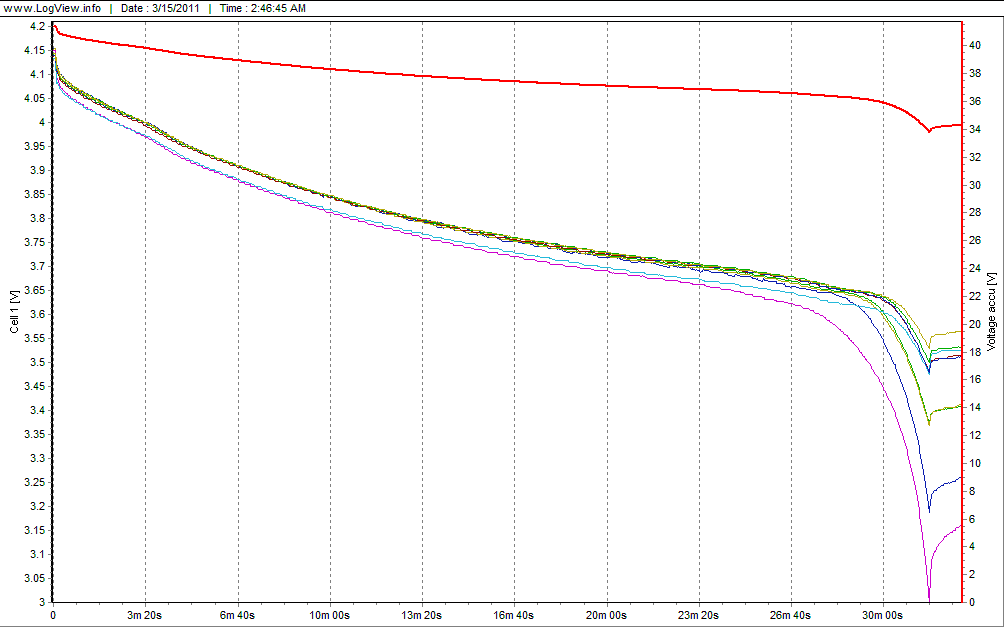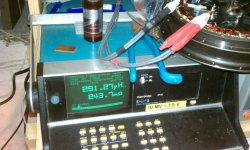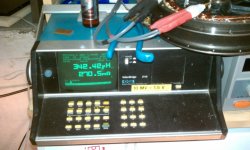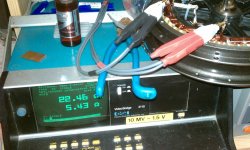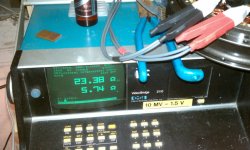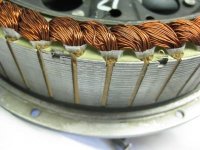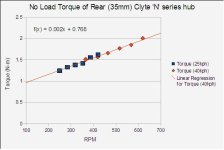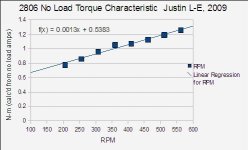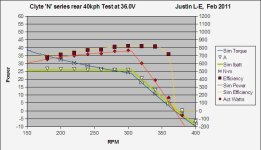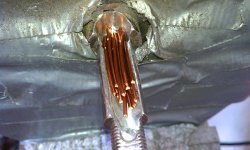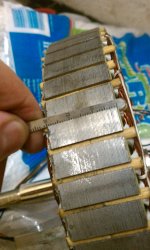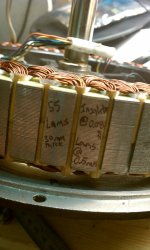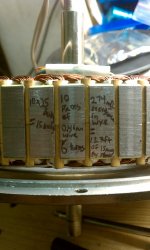Hey, there's been quite a lot revealed already about the Crystalyte 'H' motor series here so I'll try not to repeat stuff, but did want to add some of my own observations and testing results from a few months ago in case people are interested.
Construction Style
The actual motor construction as many people have pointed out is exactly like the Nine Continent 205mm direct drive motor with 46 magnets and 51 stator teeth that is made by dozens if not hundreds of domestic motor companies is China. This is not a 'Crystalyte' motor in the same sense that the X5 was, but it is Crystalyte finally making use of the much more economic and power efficient design style, and then improving the mechanics to better fit western bike standards.
The rear motors have use a 35mm lamination stack, while the front hubs use a much thinner and lighter 24mm stator width. This is necessary for the front hub to be narrow enough to properly fit a disk brake.
View attachment 6
But it also means that the rear motors are 50% more powerful and have ~50% more torque output than the front hubs, and hence the front and rear options are NOT really motors of the same family. By comparison, the most common 9C hubs of this type have a 27mm stator width, sortof in between the front and rear Crystalyte 'H' motors. (9C also offer their motors in 24mm and 35mm widths, but most people ordering them for export get the 27mm.)
17mm Axle
The axle is 17mm diameter at the shoulder rather than 15mm which we see on 9C / Golden etc. This extra 1mm on the radius means that there is a lot more metal flat surface to go against the inside of the dropout. There is certainly no need for inside washers or spreaders:
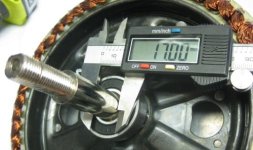 Wire Exit
Wire Exit
The wires for the motor exit a slot in the side of the axle rather than going through a hollow channel and coming out the end. This makes it WAY easier for attaching torque arms and changing around the axle hardware without having to snip off and reconfigure the connectors every time. The downside however is that it is a lot more difficult to waterproof, and this has been the demise of so many 400 and 5300 Clyte hubs. It looks like Crystalyte did a reasonable job of gooping and sealing the cable exit but only a season of wet weather riding will tell if this is effective:
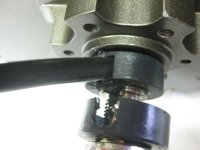 Freewheel Fit
Freewheel Fit
This hub uses the screw-on freewheel rather than a cassette freehub, no surprise. The axle on the freewheel side of the rear hubs sticks out 39mm to the shoulder:
View attachment 3
That's enough to fit a 7 speed freewheel just fine:
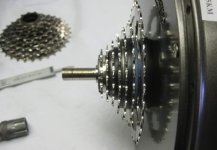
However, an 8 speed freewheel will require a spacer washer:
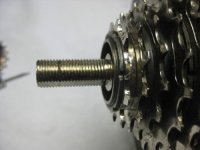 Disk Fit
Disk Fit
The best news for sure about these motors is the mount for the disk rotor. It's taken what seems like eons to get the chinese manufacturers to adopt an intrinsic 44m ISO bolt pattern for the disk rotors rather than the screw-on freewheel threads that used to be standard. However, in the case of 9C they only left ~15mm of caliper space between the rotor and side cover. Virtually all brand name calipers, especially hydraulic calipers, need at least 17mm or more of clearance. Both the front and rear 'H' Crystalyte hubs have an 18.0 mm standoff to the disk rotor mount, which is perfect:
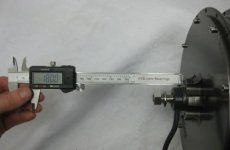
The spacing from the axle shoulder to the disk face also measured correctly (10mm front, 15mm rear), so you should be able to expect a drop-in fit with a disk equipped bike and not have to do any shimming or adjustment of the caliper.


